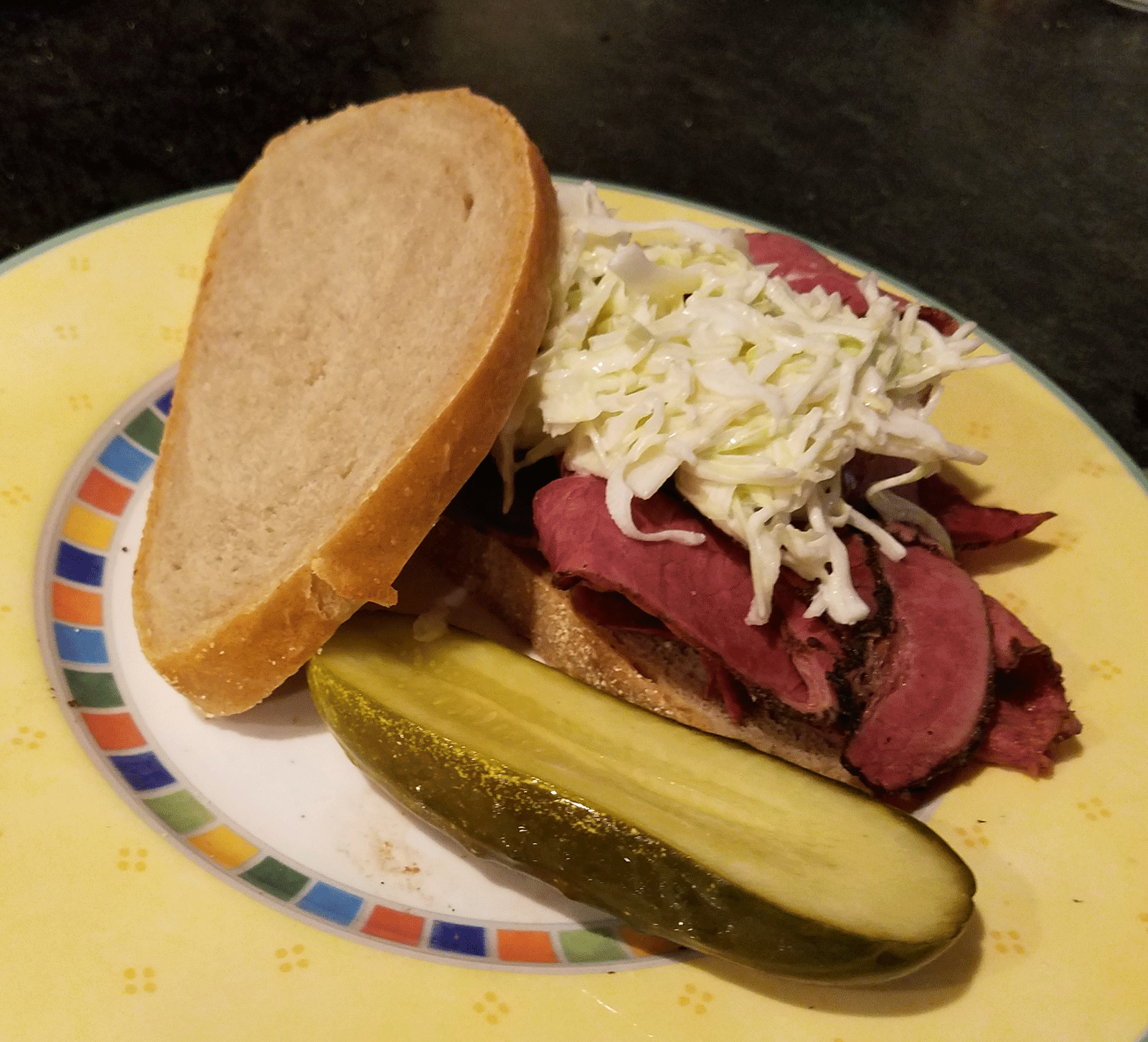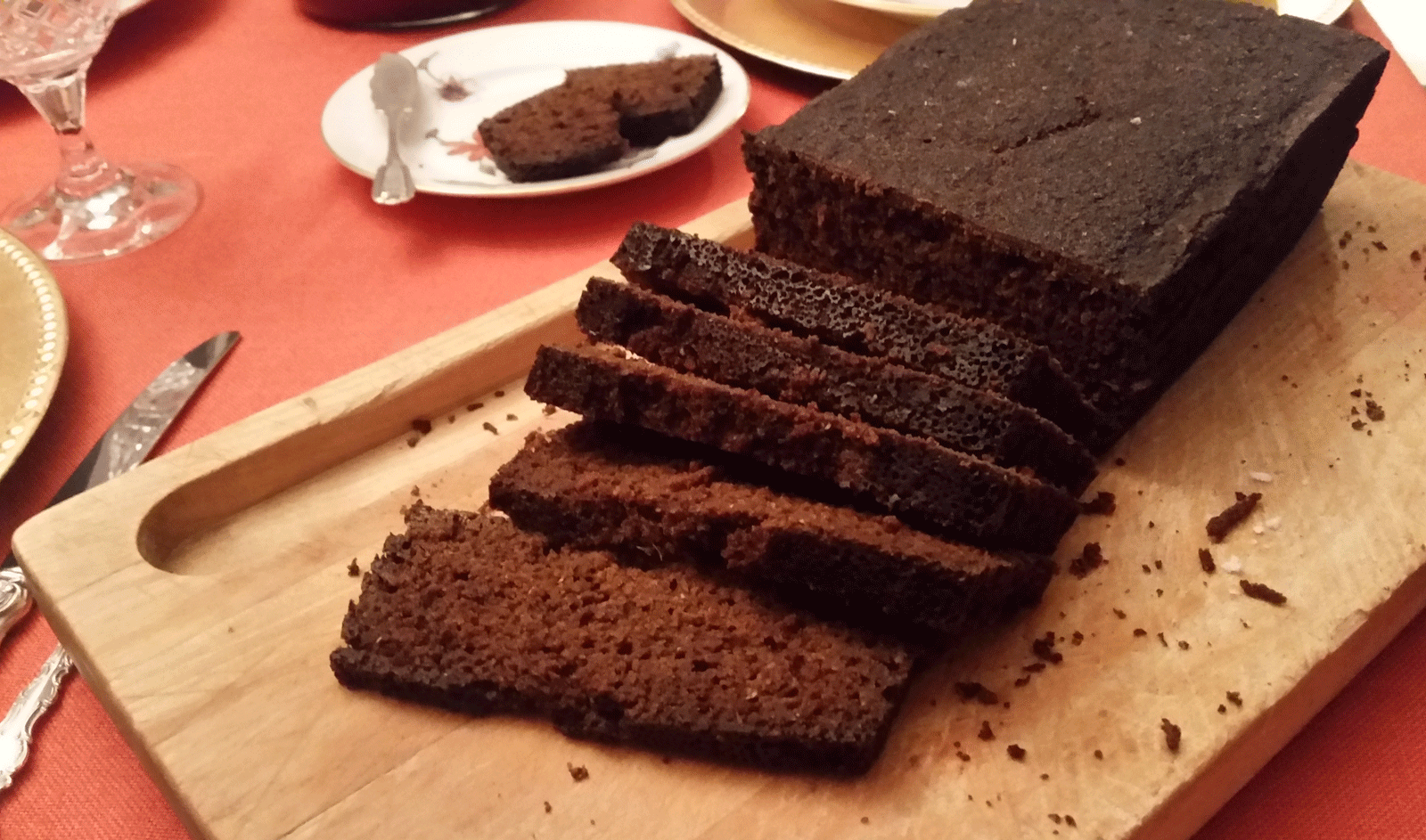| Rye %: | 40% |
| Stages: | 2-Stage quick sponge, Final dough |
| Leaven: | Rye sour culture, Instant yeast |
| Start to Finish: | 7-8 hours |
| Hands-on Time: | 30-40 minutes |
| Yield: | Two 1½ lb/700 g loaves |
Deli rye – that light, open-crumbed, caraway-fragrant New York classic – is what most Americans think of when they hear “rye bread.” Without getting into the rightness or wrongness of that fact, deli rye is without question the bread to wrap around a thick layer of pastrami, corned beef or pickled tongue – with or without Swiss cheese, cole slaw, sauerkraut, mustard and/or Russian dressing. So when my wife went shopping one morning and came back with a package of heavily peppered, deep pink pastrami, there was no question about how we were going to eat it.



